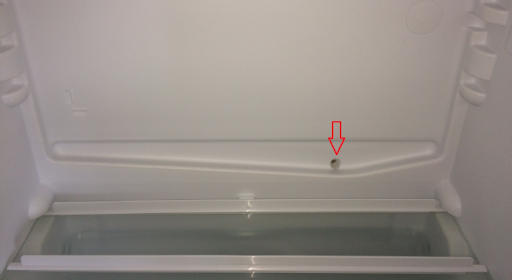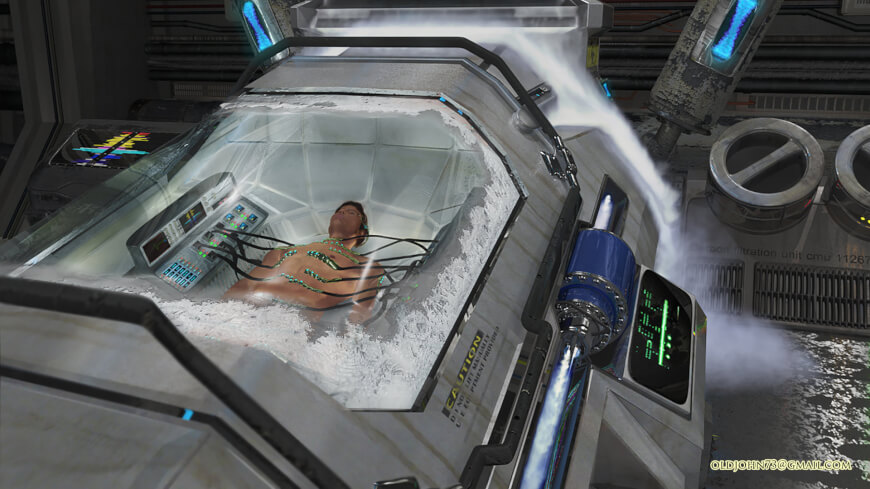Process of Refrigeration
By Anton Risse
Improved Design
Under Basic
Mechanical Overview, the fundamental design of a
common refrigerator is explained. While there are some
universal designs, there is a lot of speculation and
research onto how to make them more efficient. Consumer
refrigerators in the early times often had this simple
design. However, simpler design tended to be linked to
higher inefficiency. Most of the changes in the designs over
the decades of the refrigerator focus on improving the
efficiency as much as possible. And what happens when
efficiency is improved, is complexity is shown to increase
(Risser, R. 2011).
There are many factors that affect the efficiency of refrigeration. One of them being the refrigerant used. In consumer refrigerators ammonia was often used at first because it's very easy to convert between gas and liquid making it more efficient that other potential refrigerants, but because it's poisonous other liquids are used for consumer refrigerators, although ammonia is used for certain industrial applications (Susan Wagoner, R. (013, October 22).
Another factor affecting efficiency is the turning on and
off of the condenser. More efficiency designs have sensors
and calculators to determine how often to turn on and off,
or rather how much the condenser should be working. The
difference is similar to sudden digital frequency changes on
a graph to smoother sinusoidal waves with little change.
One issue found in refrigerators was that every time you open a fridge or freezer, water from moisture in the air gets in. This Moisture will build up over time, so to drain it in a fridge one design that's often used in some sort of drain. Depending on the design, this could be automatic or it could have to be manually drained. This picture shows a passive but automatic design.
Other technology associated with refrigeration exists that are not about improving efficiency.
There are many factors that affect the efficiency of refrigeration. One of them being the refrigerant used. In consumer refrigerators ammonia was often used at first because it's very easy to convert between gas and liquid making it more efficient that other potential refrigerants, but because it's poisonous other liquids are used for consumer refrigerators, although ammonia is used for certain industrial applications (Susan Wagoner, R. (013, October 22).
|
|
 |
|
|
https://www.google.com/url?sa=i&url=https%3A%2F%2Fwww.process-cooling.com%2Farticles%2F88182-learn-how-to-improve-the-performance-of-your-ammonia-refrigeration-systems&psig=AOvVaw2CbUKHLjIbeUrMZj43nOI7&ust=1606463533976000&source=images&cd=vfe&ved=0CAIQjRxqFwoTCPCe-JXdn-0CFQAAAAAdAAAAABAw |
One issue found in refrigerators was that every time you open a fridge or freezer, water from moisture in the air gets in. This Moisture will build up over time, so to drain it in a fridge one design that's often used in some sort of drain. Depending on the design, this could be automatic or it could have to be manually drained. This picture shows a passive but automatic design.
 |
What would happen in this picture is
that water would passively flow to the open whole at
the bottom. In a freezer, because the water would
freeze, this design would only work if the freezer
was manually opened to melt the accumulated
condensation. |
| https://www.google.com/url?sa=i&url=http%3A%2F%2Fwww.euro-parts.ca%2Fwater-on-bottom-of-refrigerator-unclogging-drain%2F&psig=AOvVaw0mhTtduMxlA7I4Dx2uLdMH&ust=1606461846383000&source=images&cd=vfe&ved=0CA0QjhxqFwoTCMC0ofDWn-0CFQAAAAAdAAAAABAI |
Other technology associated with refrigeration exists that are not about improving efficiency.
| Particularly interesting, in future technology, there is present research into "refrigerating" people, a term more officially called cryo-sleep. Particularly NASA is researching this for its hypothetical interstellar spaceship, where it would seem to take an astronomical amount of time to get to anywhere outside the solar-system, and so the cryo-sleep like stasis scene in many sci-fi movies is an actual active field of research (Caballero, A. 2020). |  https://www.google.com/url?sa=i&url=https%3A%2F%2Fmedicalfuturist.com%2Fare-you-going-to-wake-up-from-cryosleep%2F&psig=AOvVaw03J0RGRrNeN-eQZGGyKn8v&ust=1606453781351000&source=images&cd=vfe&ved=0CA0QjhxqFwoTCPinyu24n-0CFQAAAAAdAAAAABAJ |